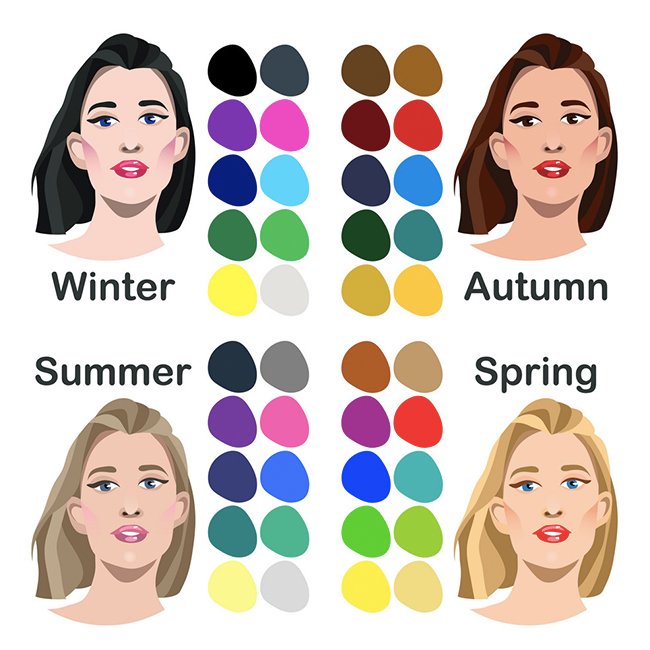How to Master Color Analysis in Your Makeup
We all know that choosing the right makeup colors can make or break your look, but did you know there's a science behind it? Color analysis is the key to unlocking your true beauty potential and enhancing your features in the most flattering way possible. This guide will walk you through the ins and outs of color analysis and how to apply it to your makeup routine for a stunning transformation.
Understanding Color Theory and Undertones
Before you can master color analysis for makeup, it's essential to understand color theory and undertones. Your skin tone can be divided into three primary undertones: warm, cool, and neutral. Identifying your undertone will help you select the perfect makeup colors for your complexion.
Warm Undertones: If you have golden or yellow undertones, you'll look great in warm, earthy colors like gold, bronze, and olive green. Opt for peachy blushes and warm-toned lipsticks to enhance your natural glow.
Cool Undertones: For those with cool, pink or blue undertones, choose cooler shades like silver, cool blues, and icy pinks. A cool-toned blush and lipstick will complement your skin tone beautifully.
Neutral Undertones: If you're one of the lucky ones with neutral undertones, you can play with both warm and cool colors! Experiment with different shades to find your favorites.
Seasonal Color Analysis: Find Your Perfect Palette
Now that you've identified your undertone, it's time to dive deeper into seasonal color analysis. This method classifies your coloring based on the four seasons: spring, summer, autumn, and winter. Each season has its unique color palette that complements the skin, hair, and eye colors associated with that season.
Spring: If you have warm undertones with light hair and eyes, you're likely a spring. Embrace vibrant, fresh colors like coral, turquoise, and golden yellow.
Summer: Cool undertones with light hair and eyes fall into the summer category. Opt for soft, muted colors like dusty rose, lavender, and pale blue.
Autumn: Warm undertones with darker hair and eyes are typical of the autumn season. Think rich, earthy tones like rust, burnt orange, and deep green.
Winter: Finally, if you have cool undertones with dark hair and eyes, you're a winter. Bold, cool shades like jewel tones, bright red, and icy silver are your best bet.
Applying Color Analysis to Your Makeup Routine
Once you've determined your seasonal color palette, it's time to apply these principles to your makeup routine.
Foundation and Concealer: Always choose a shade that matches your skin's undertone. A perfect match will create a flawless base for the rest of your makeup.
Eyeshadow: Experiment with different shades within your seasonal color palette. Create depth and dimension by combining light, medium, and dark tones.
Blush: Choose a blush color that complements your undertone and adds a natural flush to your cheeks. Remember to apply it sparingly for a subtle effect.
Lipstick: Opt for lip colors within your seasonal palette that flatter your skin tone. Don't be afraid to play with different shades to find your signature lip color.
Additional Tips for Mastering Color Analysis
Lighting Matters: Always apply your makeup in natural light, as artificial lighting can distort colors and make it difficult to see your true skin tone.
Customization is Key: Don't feel limited by your seasonal color palette. Instead, use it as a starting point and feel free to mix and match shades that work best for you.
Less is More: When it comes to makeup, less is often more. Focus on enhancing your natural beauty by choosing colors that complement your features rather than overpowering them.
Know When to Break the Rules: Sometimes, the most stunning makeup looks come from breaking the rules. Don't be afraid to step outside of your color palette and try new shades that inspire you.
Conclusion
By now, you should have a solid understanding of color analysis and how to apply it to your makeup routine. Remember that the ultimate goal is to enhance your natural beauty and feel confident in your own skin. Your seasonal color palette is a helpful guide, but don't be afraid to experiment and find the shades that make you feel truly radiant.






